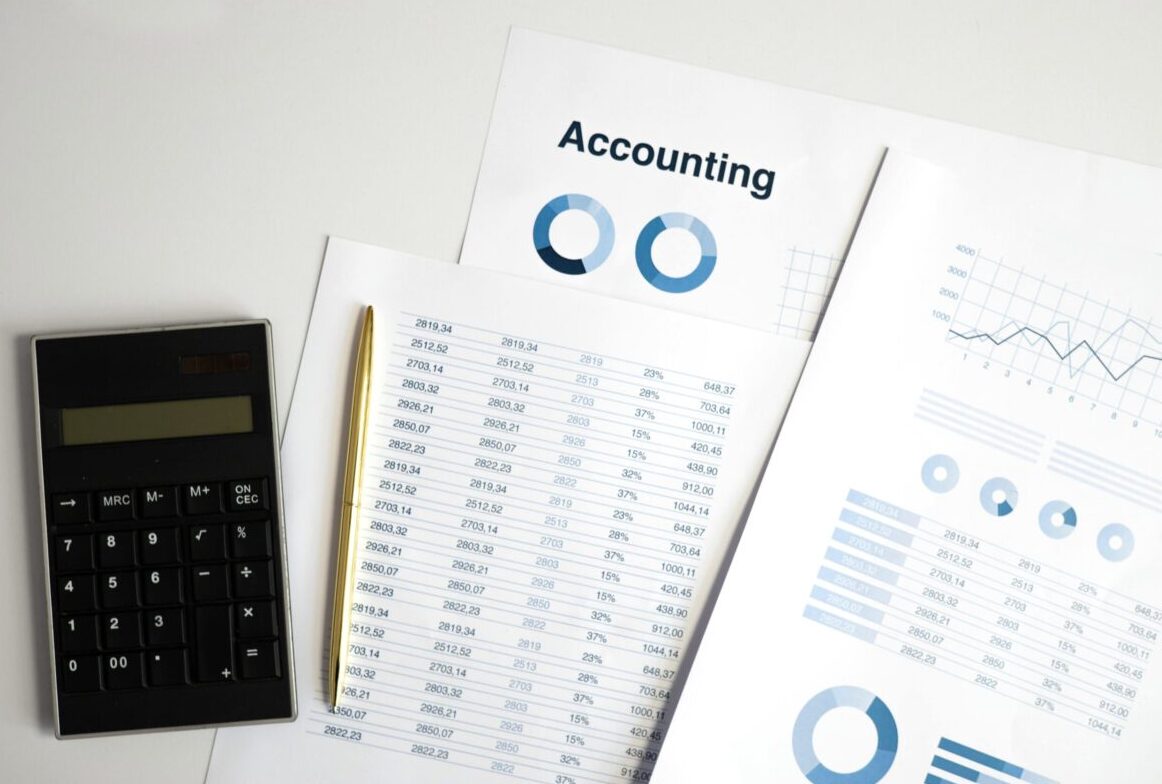Supercharge Your Financial Success with a Well-Structured Balance Sheet
Are you looking to take your financial success to the next level? A well-structured balance sheet may be the key you’ve been searching for. In today’s ever-changing economic landscape, it’s essential for individuals and businesses alike to have a clear picture of their financial health.
A balance sheet provides a snapshot of assets, liabilities, and equity, allowing you to analyze your financial standing and make informed decisions.
With the right balance sheet structure, you can effectively manage your cash flow, track your assets and debts, and identify areas for improvement. Whether you’re a business owner, an investor, or simply someone interested in personal finance, understanding and utilizing a well-structured balance sheet can supercharge your financial success.
In this article, we’ll explore the importance of a well-structured balance sheet and how it can benefit you in achieving your financial goals. We’ll also provide practical tips and advice on creating and maintaining an effective balance sheet. Don’t miss out on this opportunity to gain greater control over your finances. Let’s dive in and unlock your full financial potential.
What is a balance sheet?
A balance sheet is a financial statement that provides an overview of an individual’s or a company’s financial position at a specific point in time. It is a snapshot of assets, liabilities, and equity. The balance sheet follows a fundamental accounting equation, which states that assets equal liabilities plus equity. This equation ensures that the balance sheet is always balanced, hence the name.
The balance sheet is divided into two columns, with assets listed on the left side and liabilities and equity on the right side. Assets represent what the individual or company owns, while liabilities and equity represent what they owe. By comparing the two sides of the balance sheet, you can determine the net worth or financial health of the individual or company.
A well-structured balance sheet provides a clear and concise summary of the financial position, allowing for better decision-making and strategic planning. It serves as a foundation for financial analysis, budgeting, and forecasting. Let’s now explore the importance of a well-structured balance sheet in more detail.
Importance of a well-structured balance sheet
Having a well-structured balance sheet is crucial for several reasons. Firstly, it provides a comprehensive overview of your financial position. By accurately recording and categorizing your assets, liabilities, and equity, you gain a clear understanding of your financial health. This information is vital for making informed decisions, such as whether to invest in new opportunities or pay off existing debts.
Secondly, a well-structured balance sheet helps you manage your cash flow effectively. By tracking your assets and liabilities, you can identify potential cash flow issues and take proactive measures to address them. For example, if you notice that your liabilities are increasing faster than your assets, you may need to adjust your spending or explore new revenue streams.
Furthermore, a balance sheet allows you to assess your financial leverage and risk exposure. By analyzing the composition of your liabilities and equity, you can determine how much of your assets are financed by debt and equity. This information is crucial for evaluating your financial stability and making strategic decisions. For instance, if you have a high debt-to-equity ratio, you may need to focus on reducing your debt to mitigate risk.
In addition to these benefits, a well-structured balance sheet enables you to measure and monitor your financial performance over time. By comparing balance sheets from different periods, you can identify trends and patterns that may impact your financial success. This historical analysis can help you identify areas for improvement and set financial goals for the future.
Now that we understand the importance of a well-structured balance sheet, let’s delve into its components and how they contribute to the overall financial picture.
Components of a balance sheet
A balance sheet consists of three key components: assets, liabilities, and equity. Each component plays a crucial role in determining the financial position of an individual or company. Let’s take a closer look at each component and its significance.
Understanding Assets on a Balance Sheet
Assets are resources that an individual or company owns and can use to generate future economic benefits. They can be classified into two categories: current assets and non-current assets. Current assets are those that are expected to be converted into cash within one year or the operating cycle of the business, whichever is longer. Examples of current assets include cash, accounts receivable, inventory, and short-term investments. Non-current assets, on the other hand, are expected to provide economic benefits beyond one year. They include property, plant, and equipment, long-term investments, and intangible assets.
Assets represent the value that an individual or company has accumulated over time. They are essential for generating revenue and creating value. By understanding and tracking your assets, you can assess your financial resources and make informed decisions regarding investments, borrowing, and overall financial management.
Understanding Liabilities on a Balance Sheet
Liabilities are obligations that an individual or company owes to external parties. They represent the claims against the assets and can be classified as current liabilities and non-current liabilities. Current liabilities are those that are expected to be settled within one year or the operating cycle of the business, whichever is longer. They include accounts payable, short-term loans, and accrued expenses. Non-current liabilities, on the other hand, are obligations that extend beyond one year. Examples include long-term loans, bonds payable, and lease obligations.
Liabilities represent the debts and obligations that an individual or company must fulfill. They are essential for understanding the financial obligations and risk exposure. By accurately recording and categorizing your liabilities, you can assess your financial leverage, evaluate your ability to meet short-term and long-term obligations, and make appropriate financial decisions.
Understanding Equity on a Balance Sheet
Equity represents the residual interest in the assets of an individual or company after deducting liabilities. It is also known as net assets or shareholders’ equity in the case of a company. Equity can be further categorized into contributed capital, retained earnings, and other comprehensive income. Contributed capital represents the amount invested by shareholders or owners, while retained earnings are the accumulated profits or losses of the company over time. Other comprehensive income includes gains or losses that are not recognized in the income statement, such as changes in the value of investments or foreign currency translations.
Equity represents the ownership interest in an individual or company. It reflects the net worth and the value of the investment. By understanding and analyzing equity, you can evaluate the financial performance, measure the return on investment, and assess the overall financial health.
Now that we have explored the components of a balance sheet, let’s discuss how to create a well-structured balance sheet that effectively represents your financial position.
Understanding assets on a balance sheet
Creating a well-structured balance sheet requires careful planning and attention to detail. Follow these steps to ensure your balance sheet accurately reflects your financial position:
1. Identify and categorize your assets: Start by listing all your assets and categorizing them into current and non-current assets. Be thorough and include all relevant assets, such as cash, accounts receivable, inventory, property, and investments.
2. Determine your liabilities: Next, identify your liabilities and categorize them into current and non-current liabilities. Include all outstanding debts, loans, accounts payable, and other obligations.
3. Calculate your equity: Calculate your equity by subtracting your total liabilities from your total assets. This will give you a clear picture of your net worth or shareholders’ equity.
4. Organize the balance sheet: Once you have gathered all the necessary information, organize your balance sheet by placing assets on the left side and liabilities and equity on the right side. Use clear headings and subheadings to make it easy to read and understand.
5. Review and validate the information: Double-check all the figures and ensure they are accurate. Validate the information by comparing it with supporting documents, such as bank statements, loan agreements, and financial statements.
6. Update the balance sheet regularly: A balance sheet is a dynamic document that should be updated regularly to reflect any changes in your financial position. Make it a habit to review and update your balance sheet monthly or quarterly to ensure it remains accurate and relevant.
By following these steps, you can create a well-structured balance sheet that provides an accurate representation of your financial position. However, it’s important to be aware of common mistakes that can compromise the effectiveness of your balance sheet.
Understanding liabilities on a balance sheet
Creating a balance sheet can be challenging, especially if you’re not familiar with financial accounting principles. Here are some common mistakes to avoid when creating a balance sheet:
1. Failing to include all assets and liabilities: Make sure you include all relevant assets and liabilities in your balance sheet. Leaving out any significant items can distort your financial position and lead to inaccurate analysis.
2. Misclassifying assets and liabilities: Accurately categorize your assets and liabilities into current and non-current. Misclassifying items can affect your financial ratios and lead to misleading interpretations.
3. Not updating the balance sheet regularly: Your financial position can change over time, so it’s crucial to update your balance sheet regularly. Failing to do so can result in outdated information and inaccurate analysis.
4. Ignoring depreciation and amortization: If you have non-current assets, don’t forget to account for depreciation and amortization. These expenses reduce the value of your assets over time and should be reflected in your balance sheet.
5. Overlooking contingent liabilities: Contingent liabilities are potential obligations that may arise in the future, such as pending lawsuits or warranties. It’s important to disclose and evaluate these liabilities to provide a comprehensive view of your financial position.
By avoiding these common mistakes, you can ensure that your balance sheet accurately reflects your financial position and provides valuable insights for decision-making and financial success.
Understanding equity on a balance sheet
In conclusion, a well-structured balance sheet is a powerful tool for achieving financial success. By understanding and utilizing a balance sheet, you can effectively manage your cash flow, track your assets and liabilities, and make informed decisions. Whether you’re a business owner, an investor, or simply someone interested in personal finance, a well-structured balance sheet can provide valuable insights and help you achieve your financial goals.
Remember to carefully organize and update your balance sheet regularly to ensure its accuracy and relevance. By avoiding common mistakes and following best practices, you can harness the full potential of a well-structured balance sheet and supercharge your financial success. Take control of your finances today and unlock a brighter financial future.
How to create a well-structured balance sheet
When it comes to analyzing a balance sheet, one of the key components to understand is equity. Equity represents the ownership interest in a company or the net worth of an individual. It’s the residual interest in the assets of an entity after deducting liabilities. In simpler terms, equity is what remains when all debts and obligations have been settled.
There are two types of equity commonly found on a balance sheet: owner’s equity and shareholder’s equity. Owner’s equity refers to the net worth of an individual or a sole proprietorship, while shareholder’s equity represents the ownership interest of shareholders in a corporation. Both types of equity are crucial for understanding the financial health and value of an entity.
To calculate equity, you subtract liabilities from assets. This equation, known as the accounting equation, is the foundation of a balance sheet. By understanding equity and its role in the balance sheet, you can gain valuable insights into the financial standing of a business or individual.
Creating a Well-Structured Balance Sheet
Now that you have a basic understanding of equity, let’s explore how to create a well-structured balance sheet. A well-structured balance sheet is organized and easy to read, providing a clear snapshot of an entity’s financial position. Here are some key steps to follow when creating your balance sheet:
1. Identify and classify your assets: Start by listing all your assets, both current and long-term. Current assets include cash, accounts receivable, and inventory, while long-term assets include property, plant, and equipment. Classify each asset into its respective category.
2. Determine your liabilities: Next, identify and categorize your liabilities. Liabilities can include loans, accounts payable, and other debts. It’s important to accurately record and categorize each liability to provide a comprehensive view of your financial obligations.
3. Calculate equity: As mentioned earlier, equity is calculated by subtracting liabilities from assets. This calculation will give you a clear picture of your net worth or ownership interest.
4. Organize the balance sheet: Once you have determined your assets, liabilities, and equity, organize them in a clear and logical manner on your balance sheet. Group similar items together and provide subtotals for each category.
5. Review and update regularly: Creating a balance sheet is not a one-time task. It’s important to review and update your balance sheet regularly to reflect any changes in your financial position. This will ensure that you always have an accurate and up-to-date snapshot of your finances.
Analyzing a Balance Sheet for Financial Success
A well-structured balance sheet not only provides a snapshot of your financial standing but also serves as a powerful tool for analysis. By analyzing your balance sheet, you can gain valuable insights into your financial health and make informed decisions to drive your financial success. Here are some key areas to focus on when analyzing your balance sheet:
1. Liquidity: Liquidity refers to the ease with which assets can be converted into cash. Analyzing your balance sheet can help you determine if you have enough liquid assets to cover your short-term liabilities. This information is crucial for managing your cash flow effectively.
2. Debt-to-Equity Ratio: The debt-to-equity ratio is a measure of the financial leverage of an entity. It compares the total liabilities to the total equity and provides insights into the entity’s ability to meet its financial obligations. A lower debt-to-equity ratio indicates a lower level of financial risk.
3. Return on Equity: Return on Equity (ROE) is a measure of how effectively a company is utilizing its equity to generate profits. It is calculated by dividing net income by equity. Analyzing ROE can help you assess the profitability and efficiency of your investments.
4. Asset Turnover: Asset turnover measures how effectively a company is utilizing its assets to generate revenue. It is calculated by dividing net sales by average total assets. A higher asset turnover ratio indicates more efficient asset utilization.
By analyzing these key metrics on your balance sheet, you can gain valuable insights into your financial health and identify areas for improvement. This information will enable you to make informed decisions that can drive your financial success.
Common Mistakes to Avoid When Creating a Balance Sheet
While creating a balance sheet can be a valuable exercise, there are some common mistakes to avoid. These mistakes can undermine the accuracy and effectiveness of your balance sheet. Here are some key mistakes to watch out for:
1. Incorrect categorization: It’s important to accurately classify your assets and liabilities into their respective categories. Incorrect categorization can distort the financial picture and lead to inaccurate analysis.
2. Failure to update regularly: As mentioned earlier, regularly updating your balance sheet is crucial for maintaining its accuracy. Failure to update it regularly can result in outdated and misleading information.
3. Overlooking contingent liabilities: Contingent liabilities are potential obligations that may arise in the future. It’s important to identify and disclose these liabilities on your balance sheet to provide a comprehensive view of your financial position.
4. Ignoring non-financial assets: Non-financial assets, such as intellectual property or brand value, can have a significant impact on the overall value of an entity. Ignoring these assets can result in an incomplete and undervalued balance sheet.
Conclusion
In conclusion, a well-structured balance sheet is a powerful tool for achieving financial success. By understanding equity, creating a well-organized balance sheet, and analyzing it effectively, you can gain valuable insights into your financial health and make informed decisions. Avoiding common mistakes and regularly updating your balance sheet will ensure its accuracy and reliability.
Whether you are a business owner, an investor, or simply someone interested in personal finance, taking the time to understand and utilize a well-structured balance sheet can supercharge your financial success. It provides a clear snapshot of your financial standing, allowing you to track your assets and liabilities and identify areas for improvement. So, don’t wait any longer. Start creating your well-structured balance sheet today and unlock your full financial potential.
Analyzing a balance sheet for financial success
A balance sheet is a financial statement that provides an overview of a company’s assets, liabilities, and equity at a specific point in time. While assets and liabilities are relatively straightforward concepts, equity is often misunderstood or overlooked. Equity represents the ownership interest in a company, and it’s crucial to understand its role in a balance sheet.
Equity can be divided into two main categories: owner’s equity and retained earnings. Owner’s equity refers to the initial investment made by the owner(s) of the company, while retained earnings are the accumulated profits that have been reinvested into the business over time. Together, these components make up the equity section of a balance sheet.
By understanding equity and its components, you can gain valuable insights into the financial health of a company. Positive equity indicates that the company’s assets exceed its liabilities, while negative equity suggests the opposite. Analyzing equity trends over time can help you assess the profitability and growth potential of a business, making it an essential aspect of a well-structured balance sheet.
10: Conclusion
A well-structured balance sheet is a powerful tool for analyzing your financial standing and making informed decisions. By examining the various components of your balance sheet, you can gain valuable insights into your financial health and identify areas for improvement. Here are some key factors to consider when analyzing a balance sheet:
1. Liquidity: Assess the liquidity of your assets by comparing your current assets to your current liabilities. A high ratio indicates that you have enough liquid assets to cover your short-term obligations, while a low ratio may suggest potential cash flow issues.
2. Debt-to-equity ratio: Calculate your debt-to-equity ratio by dividing your total liabilities by your total equity. This ratio provides insights into the level of debt financing used by a company or individual. A high ratio may indicate a higher risk profile, while a low ratio suggests a more conservative financial approach.
3. Return on equity: Calculate your return on equity by dividing your net income by your average equity. This ratio measures the profitability of your investments or business activities. A higher return on equity indicates more efficient use of capital and better financial performance.
4. Asset turnover: Analyze your asset turnover ratio by dividing your net sales by your average total assets. This ratio measures the efficiency of your asset utilization in generating revenue. A higher ratio suggests better performance and effective use of assets.
By regularly analyzing your balance sheet using these key factors, you can identify financial strengths and weaknesses, make informed decisions, and take the necessary steps to improve your financial success.





